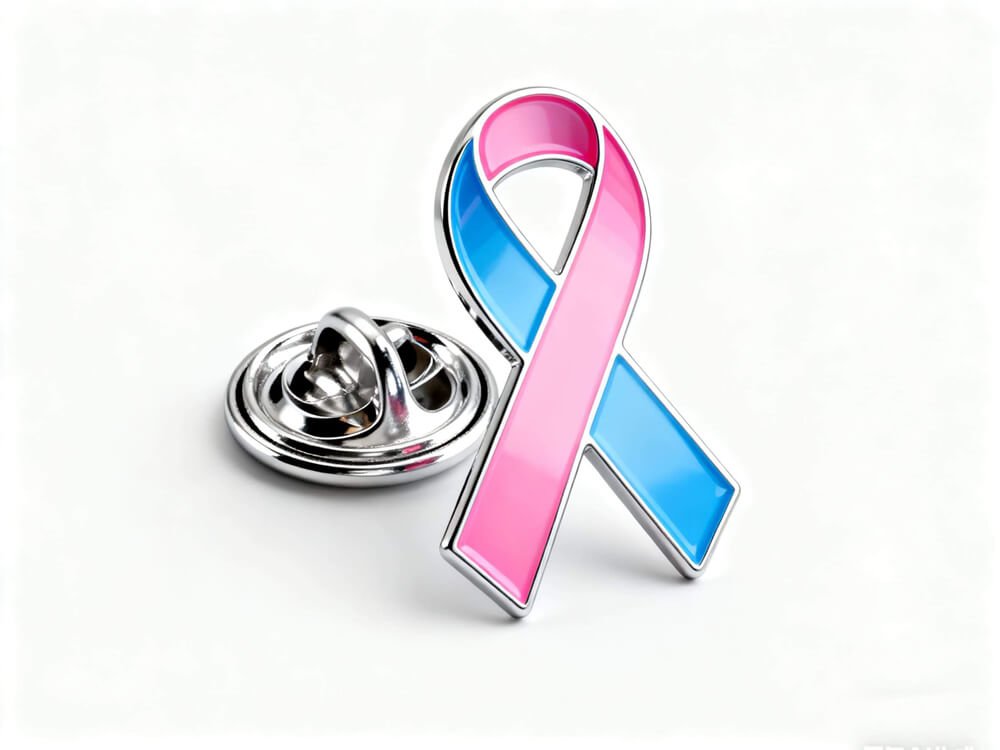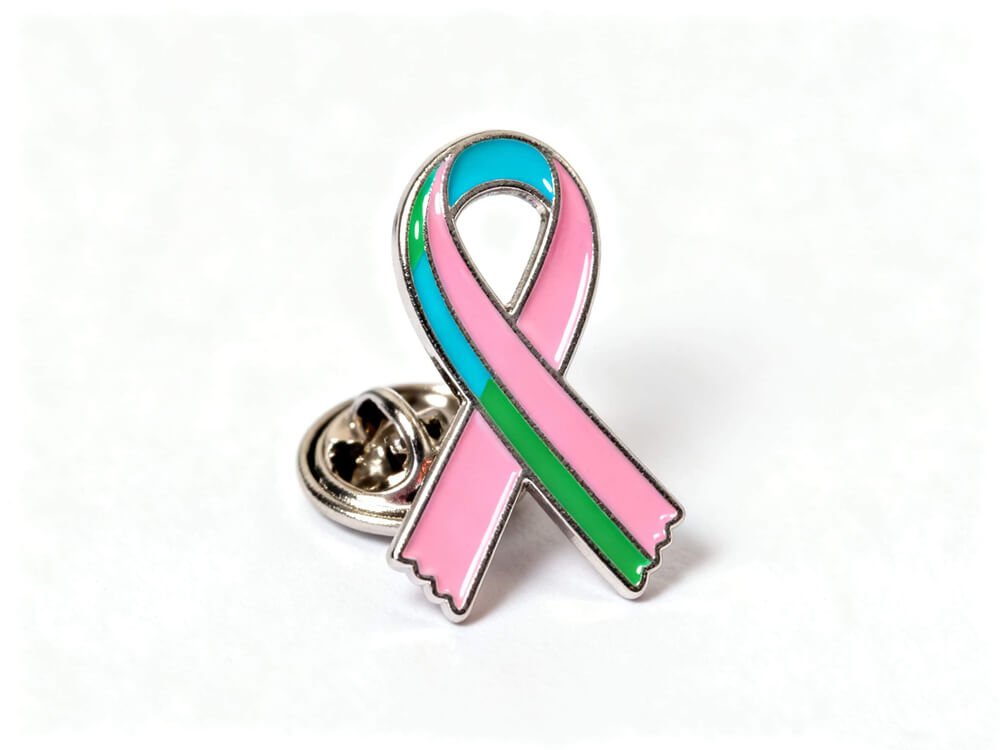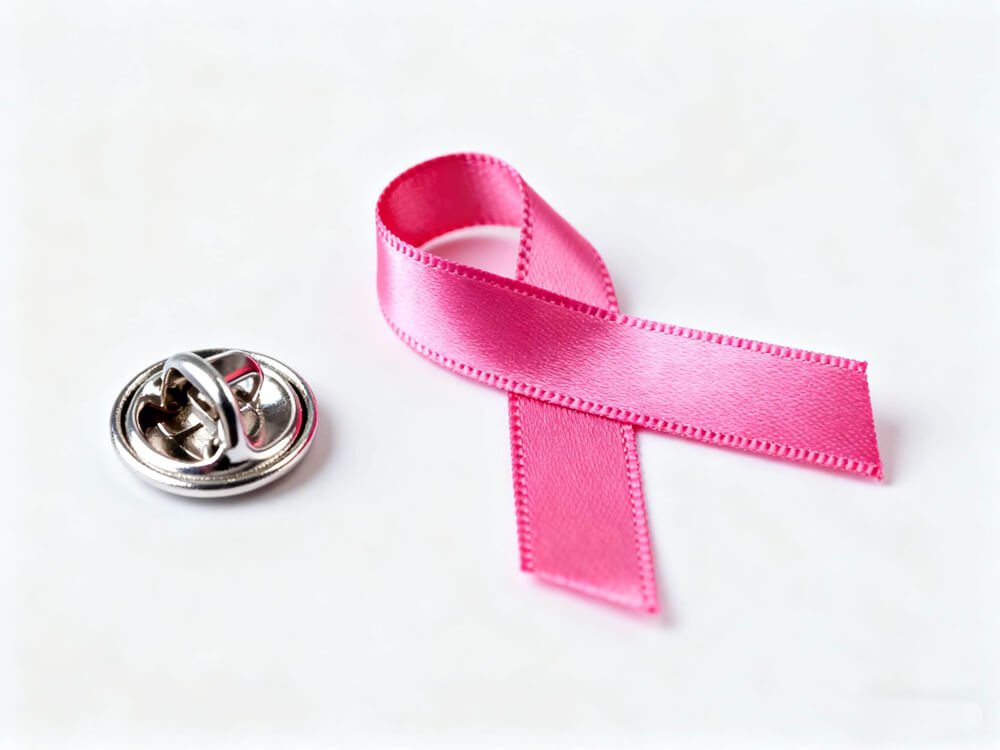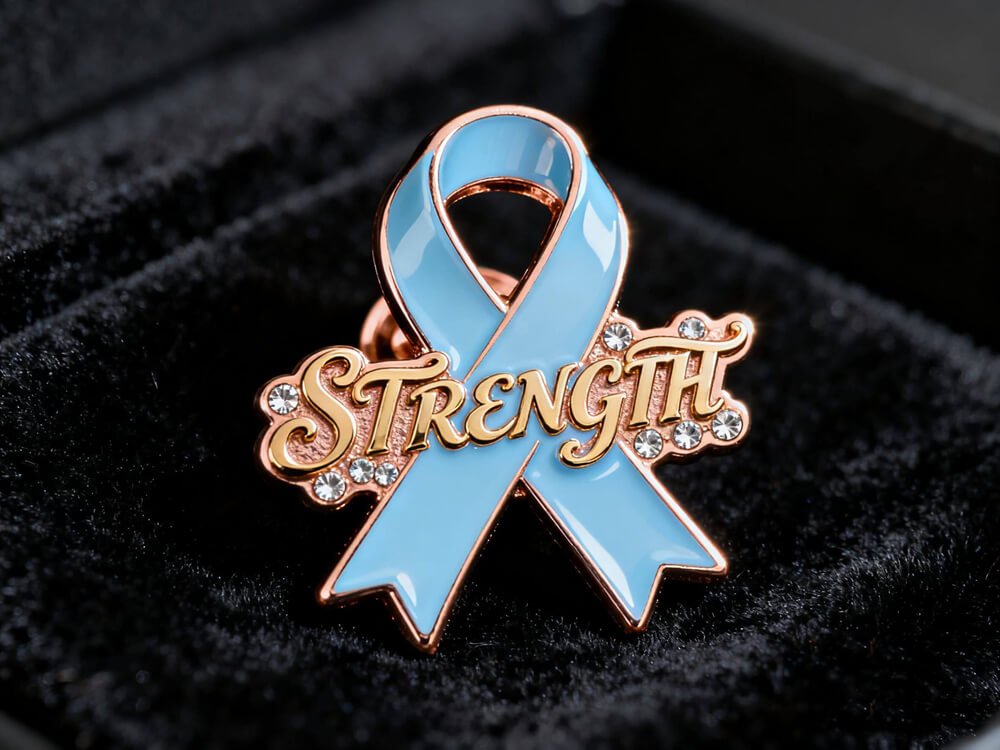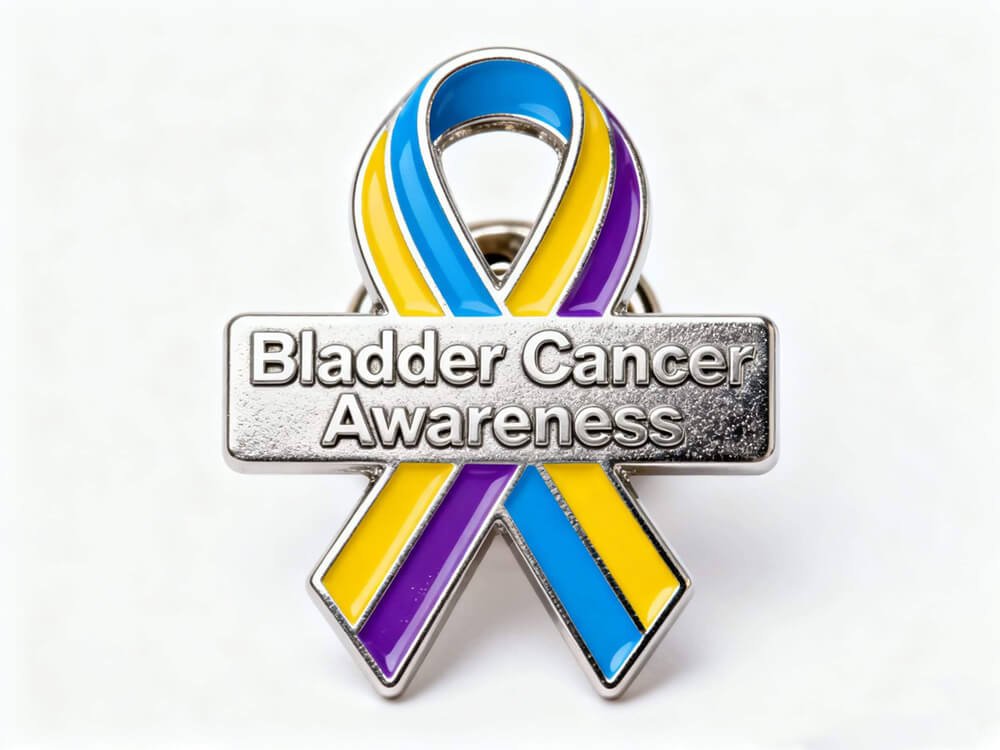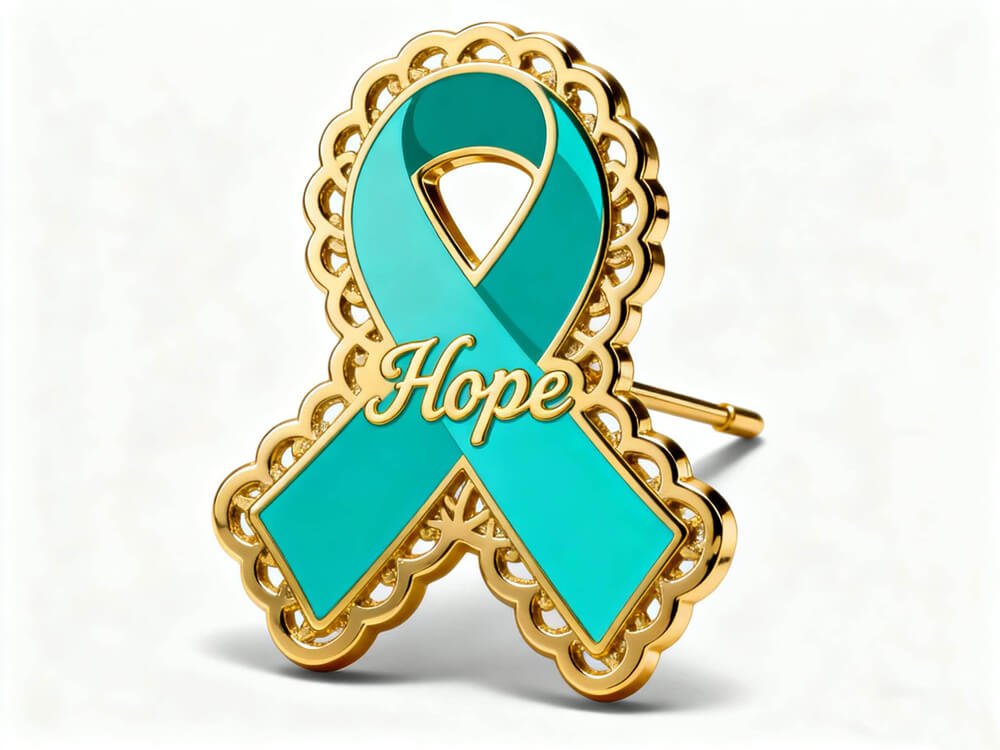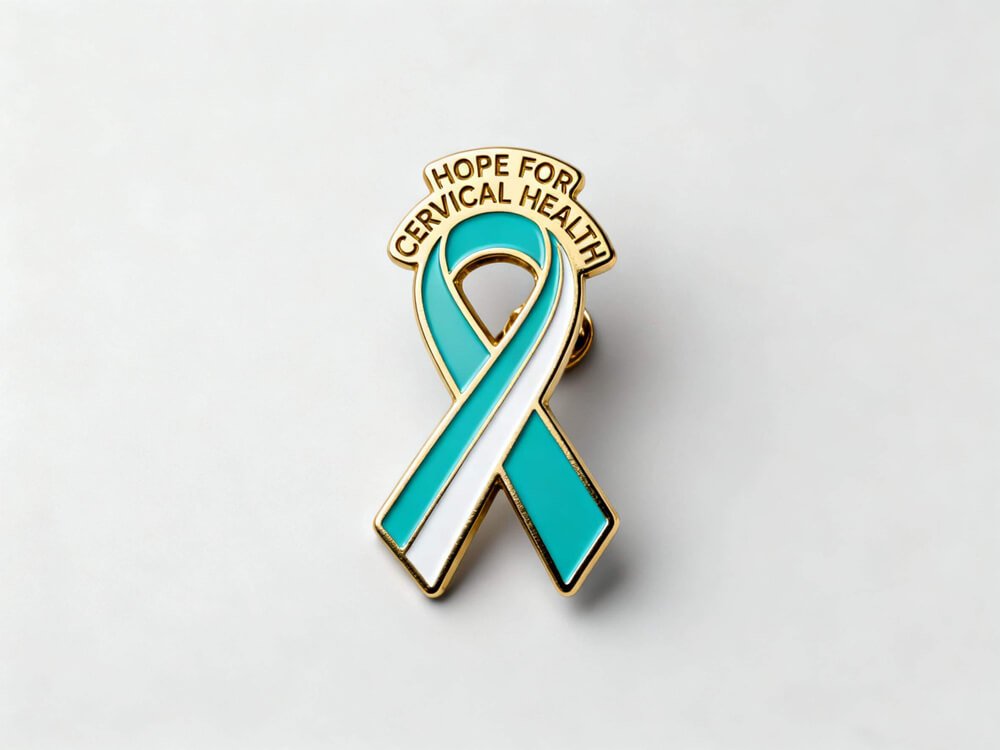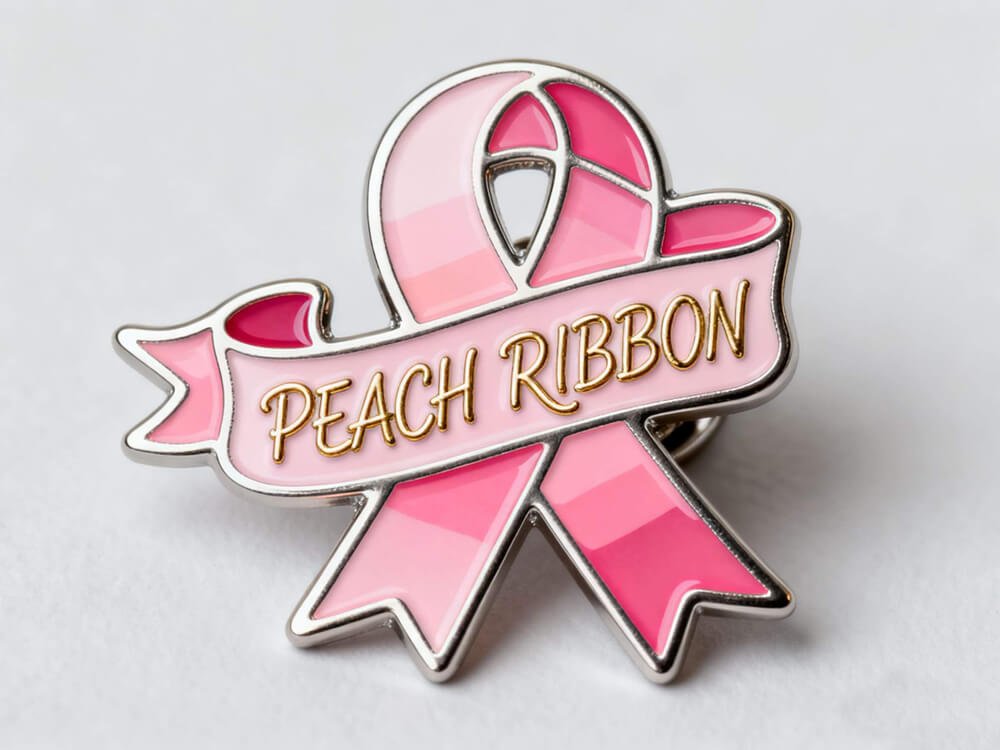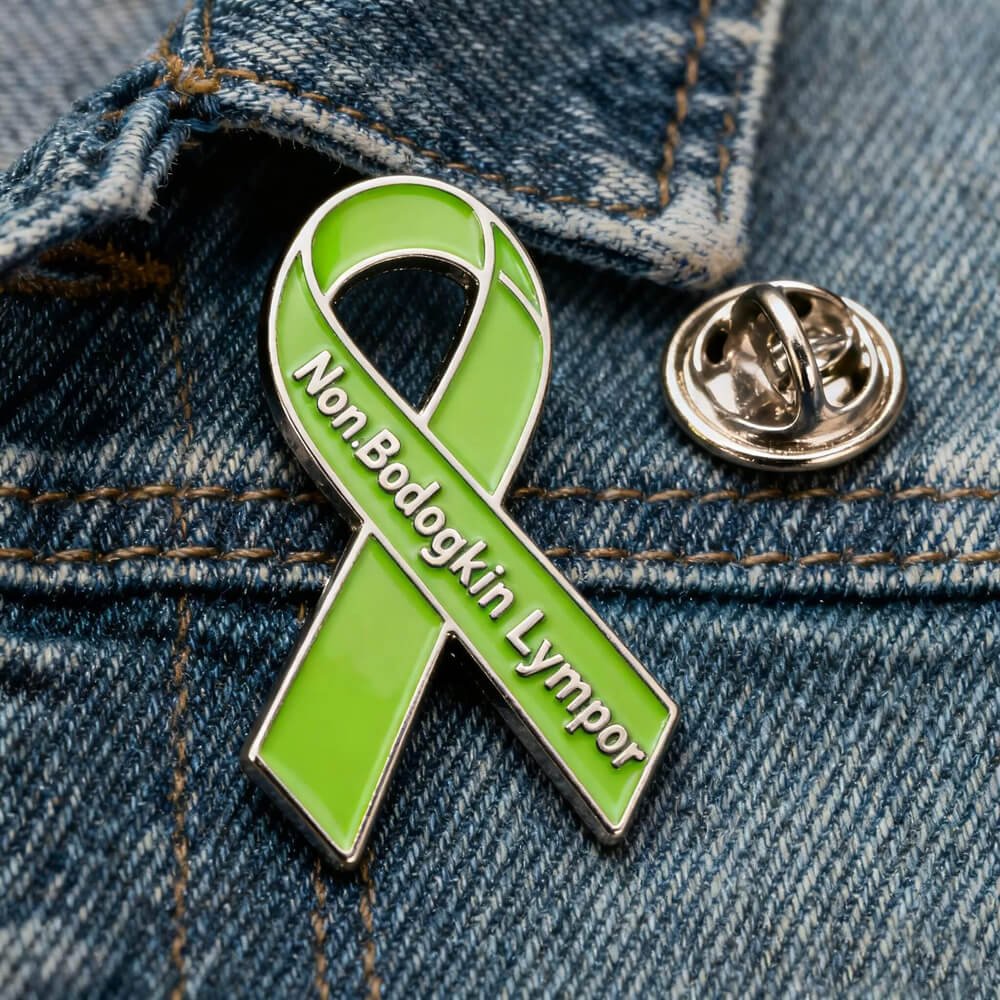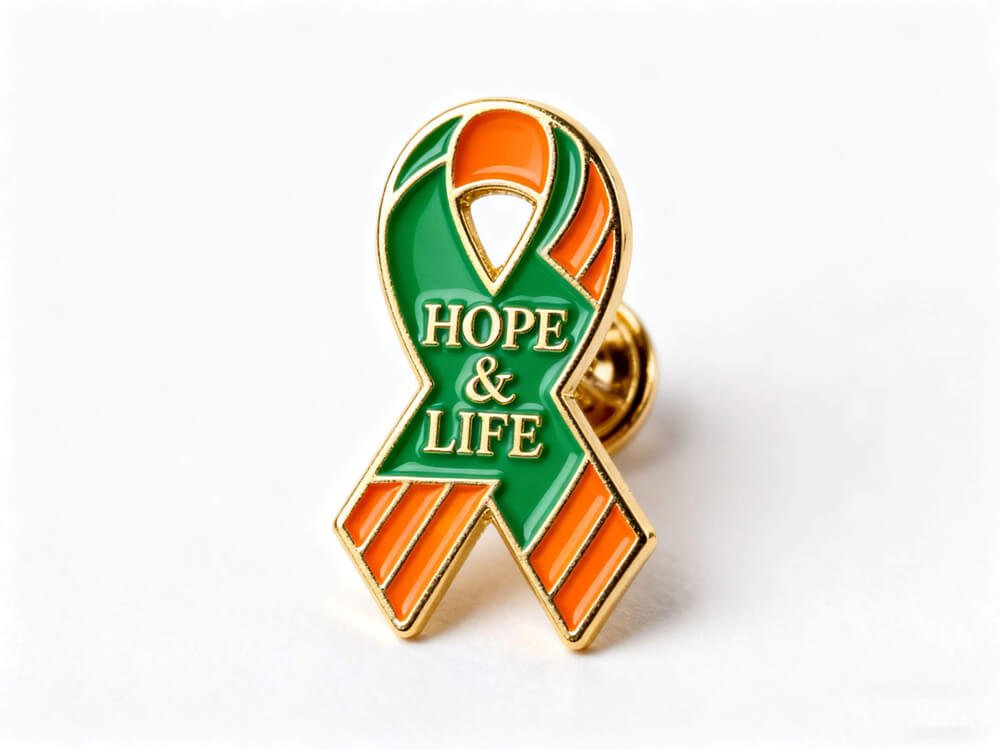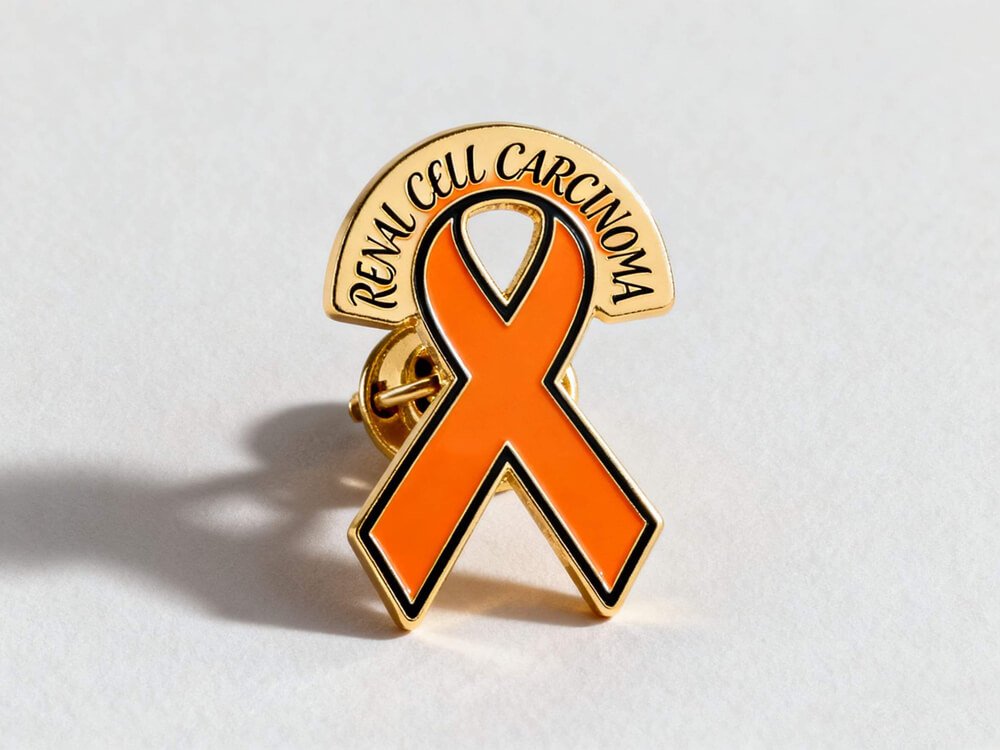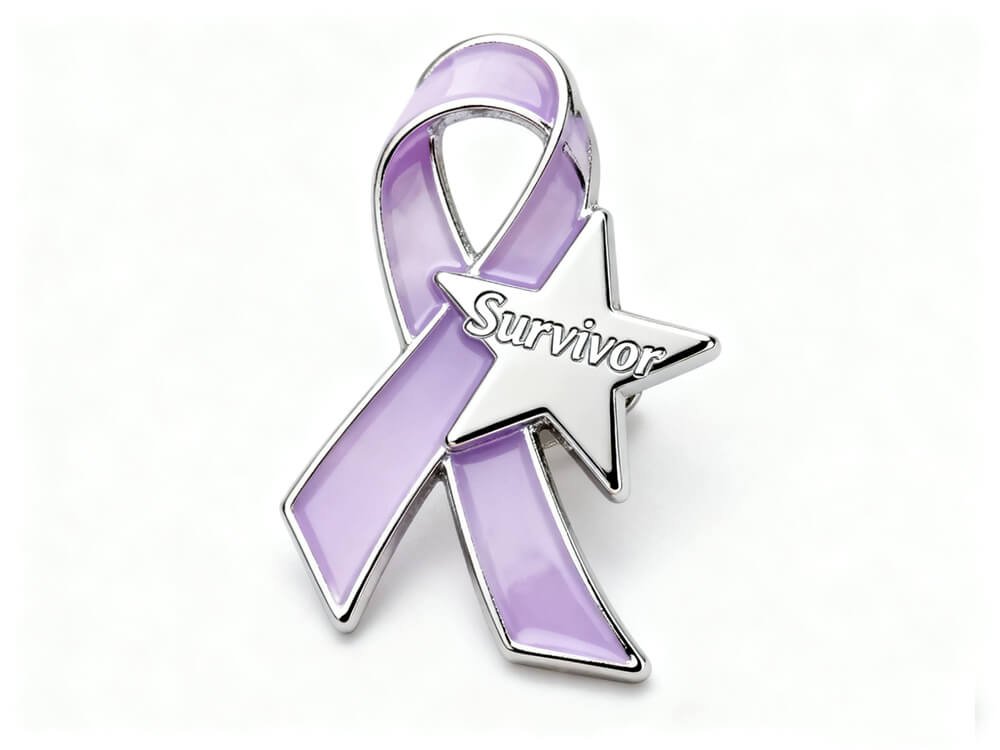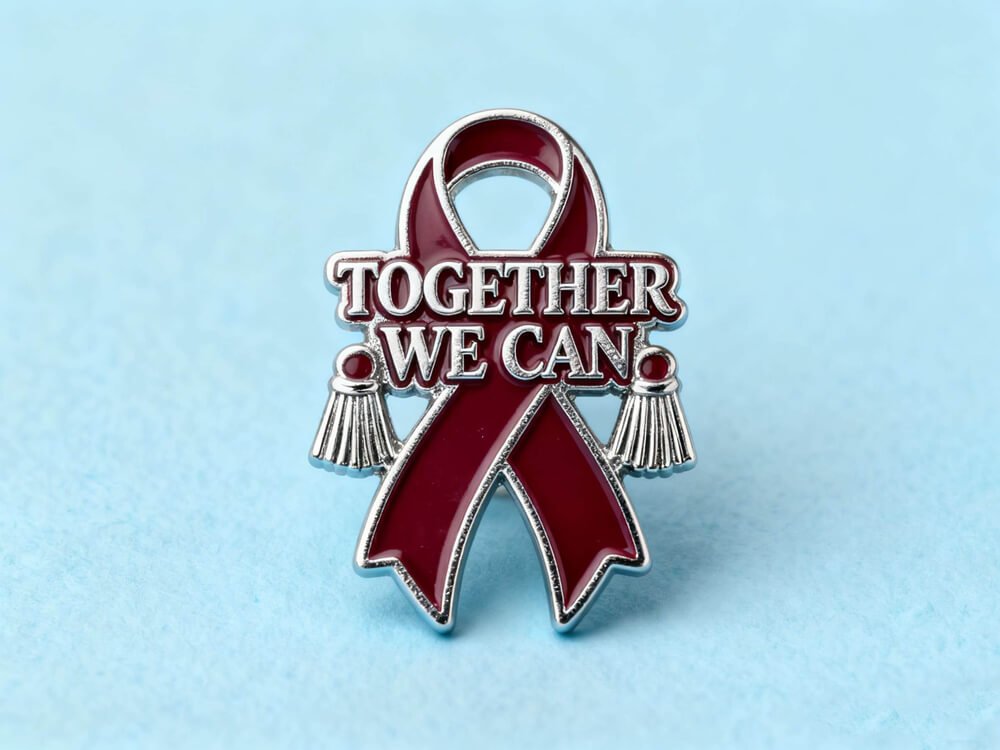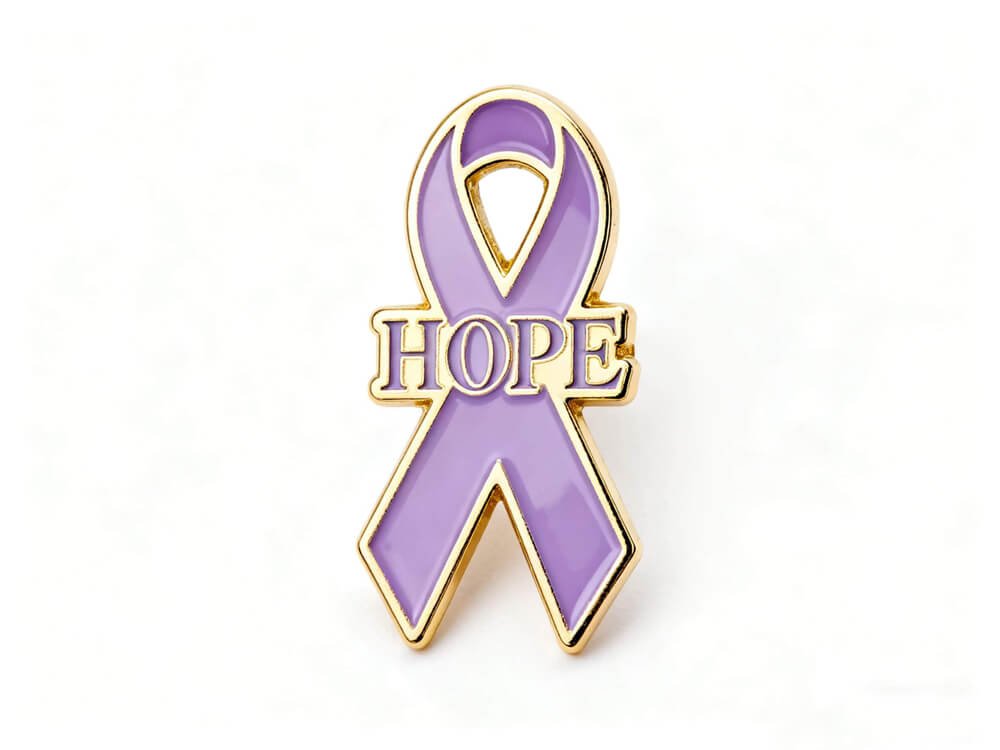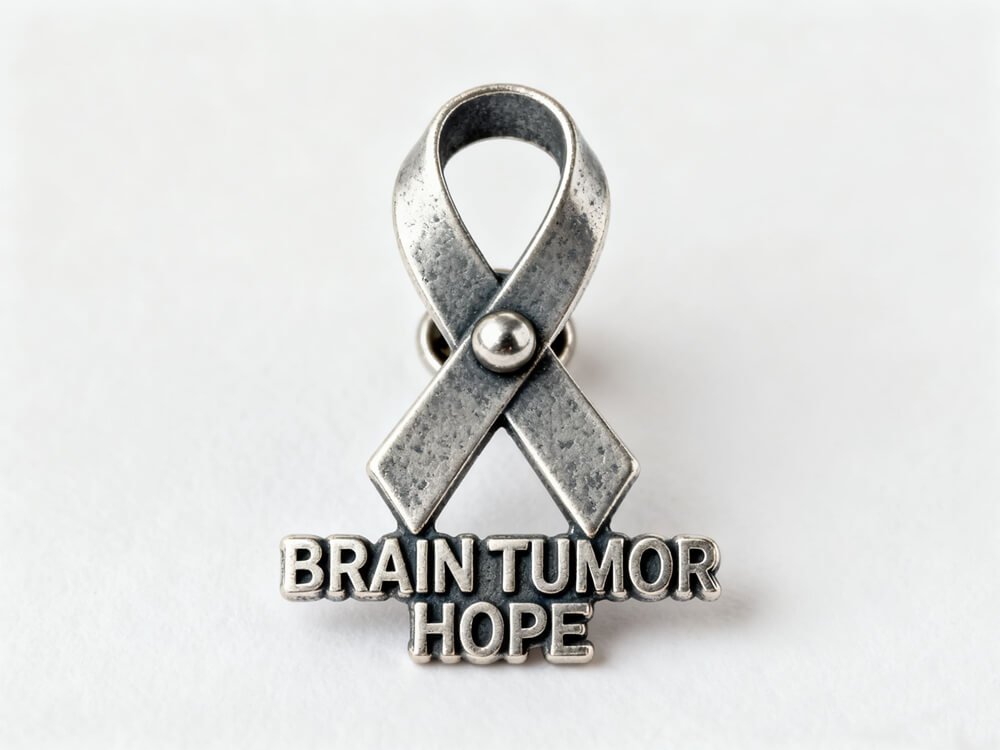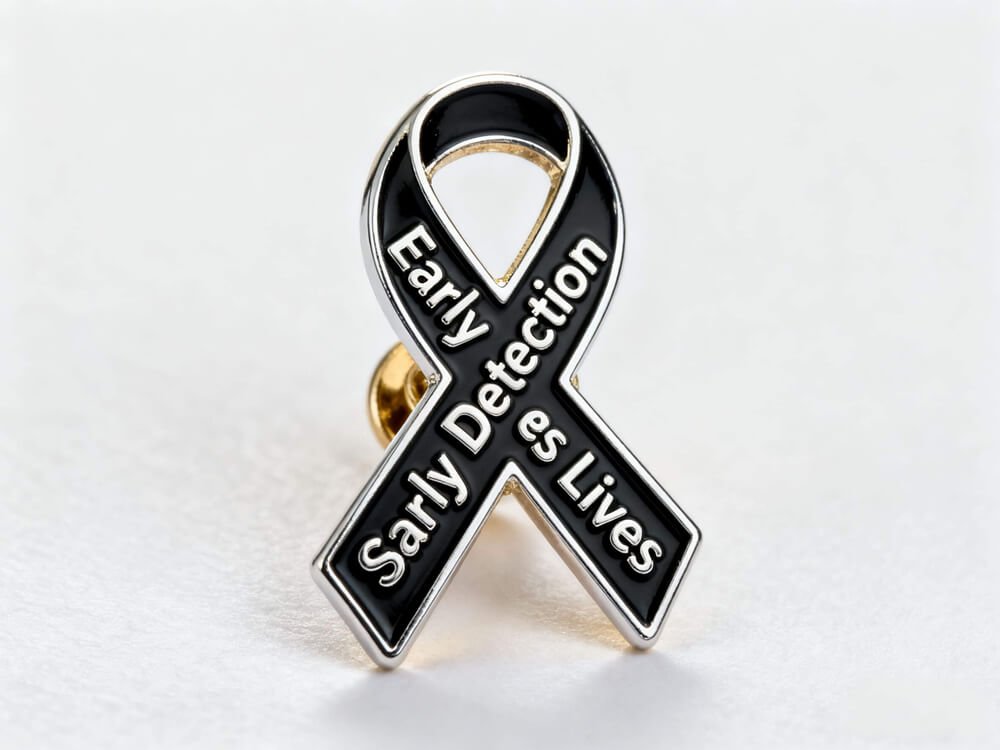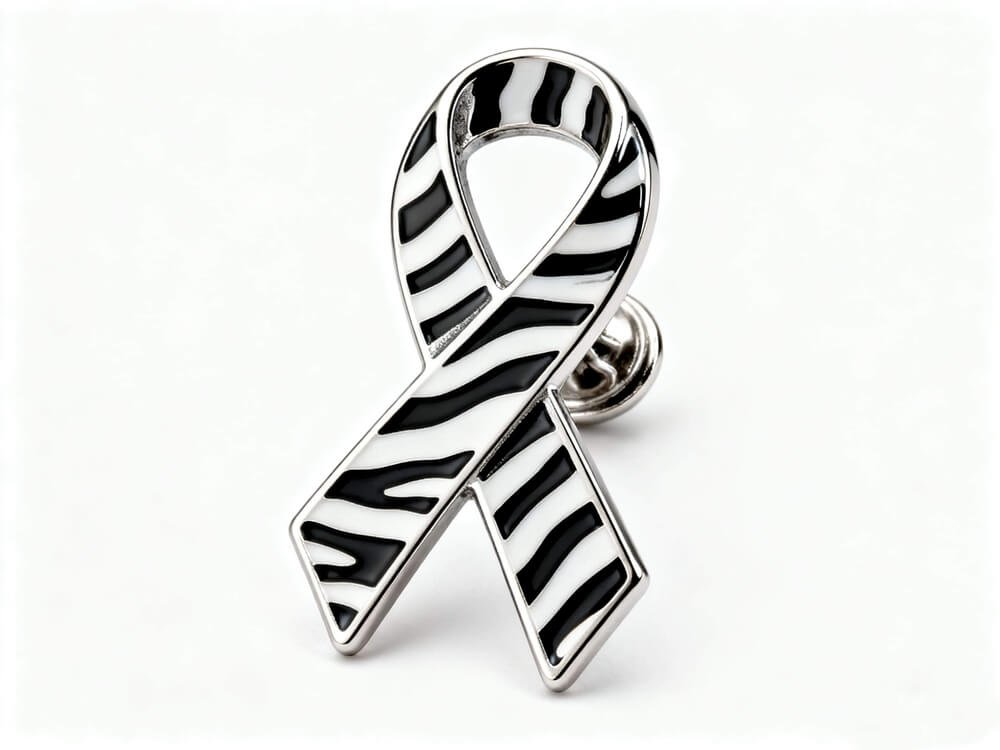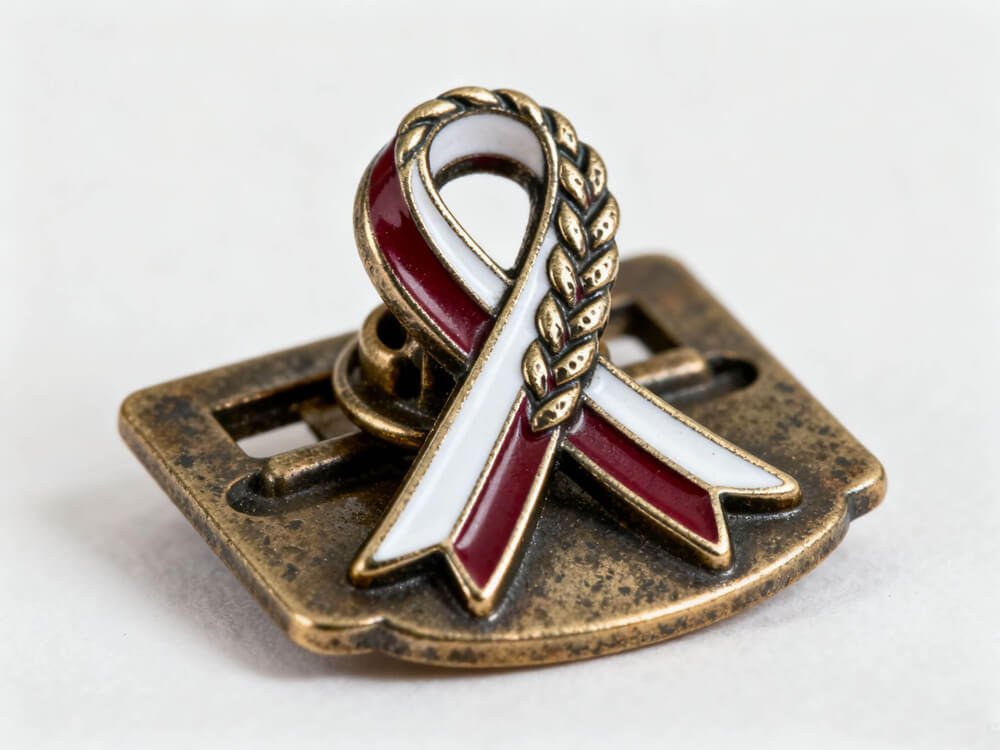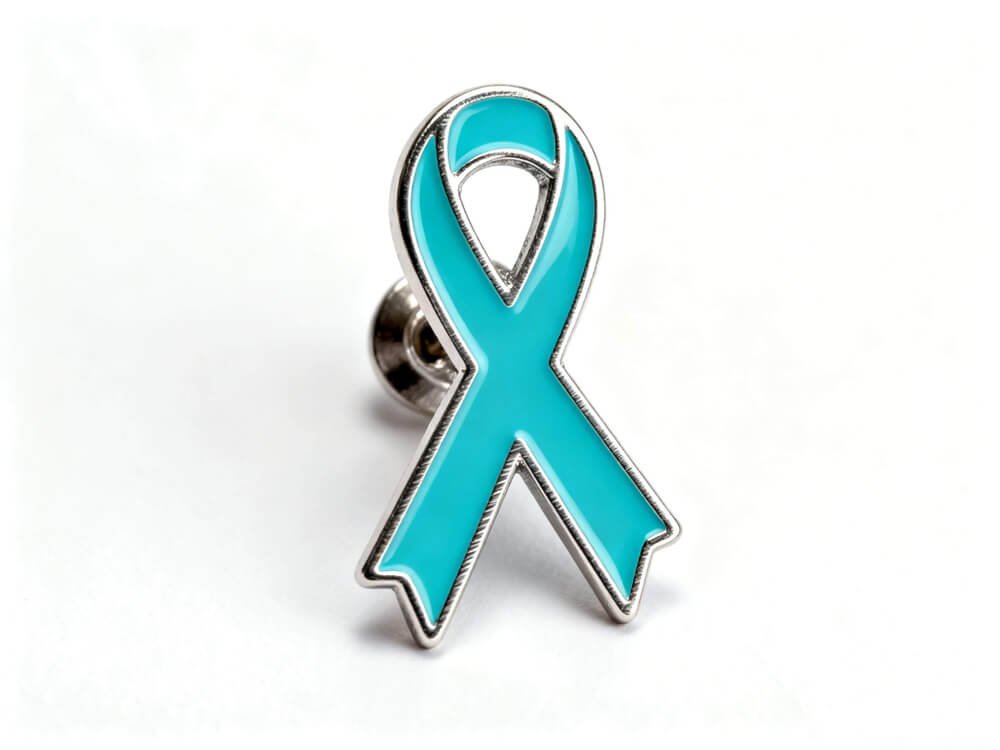Cancer awareness ribbons are more than just small pieces of colored fabric; they are powerful symbols that communicate hope, solidarity, and the urgent need for action in the global fight against cancer. While the pink ribbon is a widely recognized symbol for breast cancer, it represents just one hue in a vibrant tapestry of over 50 different ribbons, each dedicated to raising awareness for specific cancer types, honoring patients and survivors, and inspiring ongoing research. This article will take you on a journey through the fascinating history of these symbols, delve into the unique meanings behind each color, explore the ongoing discussions about their impact, and highlight how these seemingly simple ribbons drive tangible change in our collective pursuit of a world free from cancer.
Innholdsfortegnelse
The Genesis of a Movement: A Brief History of Awareness Ribbons
The story of awareness ribbons is a captivating journey that started not in a medical lab, but with a popular song and a heartfelt plea. These simple loops of fabric have evolved into potent tools for public education and emotional support, transforming how we visually communicate solidarity for critical causes.From Pop Culture to Public Consciousness: Early Uses of Ribbons
The concept of using ribbons as a public display of support first gained widespread recognition in the 1970s. The popular tune, “Tie a Yellow Ribbon Round the Ole Oak Tree,” inspired the wife of an American hostage held in Iran to tie yellow ribbons around trees. This act was a poignant symbol, a visible sign of hope for her husband’s safe return and a rallying cry to heighten awareness. This simple gesture of solidarity quickly spread, establishing the ribbon as a powerful, non-verbal communicator for public causes.Fast forward to the early 1990s, and the red ribbon burst onto the scene, championed by AIDS activists. This vibrant symbol quickly became synonymous with AIDS awareness and solidarity, particularly within artistic communities. Its immediate and powerful impact set a crucial precedent, demonstrating how a singular color could effectively represent a health-related cause and mobilize public sentiment. This laid the groundwork for the cancer awareness movement that would soon follow.The Birth and Ascent of Cancer Awareness Ribbons
The direct link between ribbons and cancer awareness began with a determined woman named Charlotte Haley. In 1991, at 68 years old, Haley started making peach ribbons in her California dining room. Her goal was deeply personal: to draw attention to the critical need for increased cancer prevention funding from the National Cancer Institute. She attached a postcard to each ribbon, urging recipients to lobby for a larger research budget. Her grassroots efforts were remarkable, distributing thousands of these peach ribbons and sparking initial conversations.However, the global dominance of the pink ribbon took a different path. In 1992, the editor of *Self Magazine* and a vice president at Estée Lauder approached Haley, seeking a partnership for their own breast cancer awareness campaign. Haley declined, concerned that their proposed use was too commercial. Undeterred, the executives decided to use a different color – pink – for their initiative. This decision proved to be a pivotal moment. The campaign propelled the pink ribbon into a globally recognized symbol for breast cancer, setting a powerful precedent that inspired countless other cancer organizations and patient groups to adopt their own distinct colors.The success of the pink ribbon created a ripple effect across the cancer advocacy landscape. Soon, other cancer types began adopting their own symbolic hues. The proliferation was swift, further aided by the rise of online platforms like ChooseHope.com, launched in 1999, which offered a wide array of colored merchandise for various cancer causes. What started as a few individual efforts quickly transformed into a robust, colorful movement, cementing the ribbon’s place as a simple, yet profoundly impactful, tool in the fight against cancer.A Spectrum of Solidarity: Decoding Individual Cancer Ribbon Colors
Each cancer awareness ribbon tells a unique story of struggle, hope, and resilience. Understanding these specific colors empowers us to offer more informed support and recognize the diverse challenges faced by millions. Let’s delve into the spectrum of these symbols, highlighting their meanings and the cancers they represent.The Iconic Pink and Its Family (Breast Cancers)
De pink ribbon stands as perhaps the most universally recognized symbol in the world of cancer awareness, a beacon of hope and strength for millions.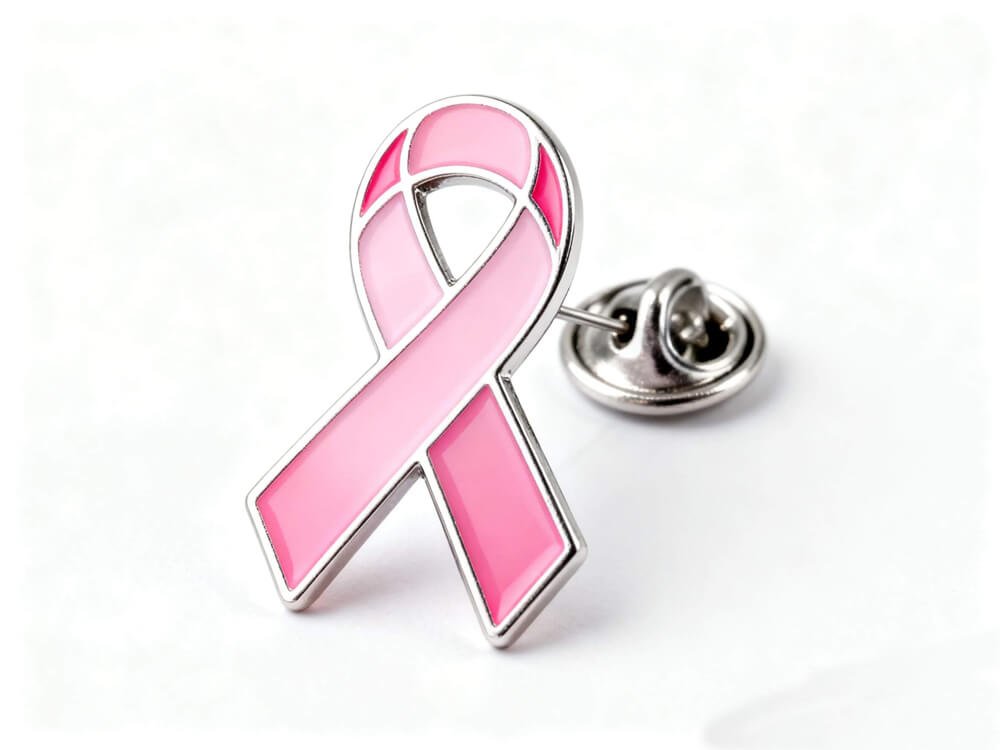
Pink Ribbon (General Breast Cancer Awareness)
De pink ribbon is intrinsically linked to breast cancer, affecting millions globally. October marks Breast Cancer Awareness Month, a time for widespread campaigns and events. This ribbon symbolizes hope, strength, and the feminine spirit, emphasizing the critical importance of early detection through screenings like mammograms, alongside ongoing research. Breast cancer is the most common cancer among women worldwide (excluding skin cancer), with significant advancements in personalized treatments that have greatly improved survival rates. Over 313,000 individuals are diagnosed annually in the U.S., highlighting the need for continuous advocacy and support services.
Pink and Blue Ribbon (Male Breast Cancer)
Also observed in October, the pink and blue ribbon draws attention to male breast cancer. This variant, while less common, is equally serious and often faces delayed diagnoses due to a lack of awareness that men can also develop the disease. This ribbon serves to promote awareness across all genders and addresses the unique psychological challenges and potential stigma men may experience with a breast cancer diagnosis.
Pink, Teal, and Green Ribbon (Metastatic Breast Cancer)
This multi-colored ribbon represents metastatic (Stage IV) breast cancer, distinguishing it from early-stage disease. It highlights the ongoing, often incurable, nature of MBC, where cancer has spread to distant parts of the body. The ribbon underscores the vital need for dedicated research into treatments that not only extend life but also significantly improve the quality of life for those living with MBC.
Hot Pink Ribbon (Inflammatory Breast Cancer – IBC)
De hot pink ribbon focuses specifically on Inflammatory Breast Cancer (IBC), a rare yet aggressive form of the disease. IBC is often misdiagnosed because it typically doesn’t present with a lump but rather with distinct symptoms like swelling, redness, and dimpling of the skin, resembling an infection. This ribbon is crucial for raising awareness about its unique characteristics for timely diagnosis.
The Golden Standard (Childhood Cancer)
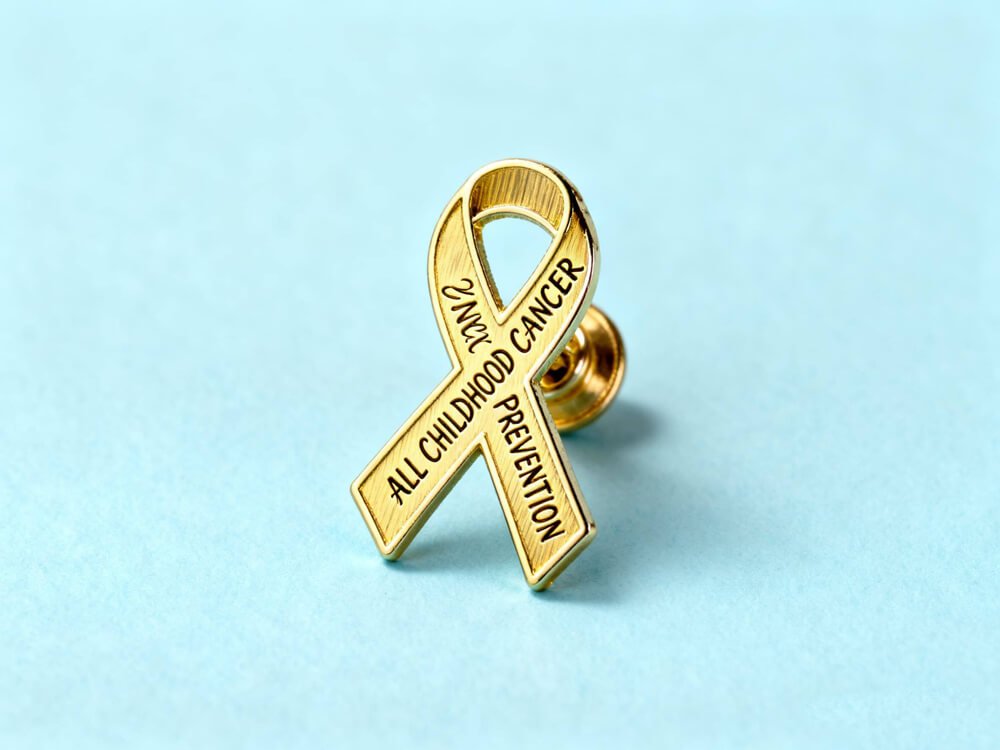
Gold Ribbon (All Childhood Cancers)
De gold ribbon shines brightly in September, recognized as Childhood Cancer Awareness Month. It symbolizes the immense preciousness of children, reflecting the idea that “gold is a precious metal.” This ribbon highlights the urgent need for dedicated research and kinder, more effective treatments tailored for pediatric cancers. Childhood cancer is tragically the leading cause of death by disease for children aged 0 to 14, presenting unique biological challenges and potential long-term side effects from intensive treatments. The gold ribbon mobilizes vital support for young patients, their families, and specialized pediatric oncology research efforts.
The Blues and Beyond (Colorectal, Prostate, Bladder, Gynecological Cancers)
Blue, in its various shades and combinations, plays a significant role in representing several prominent cancer types, each with its unique awareness message.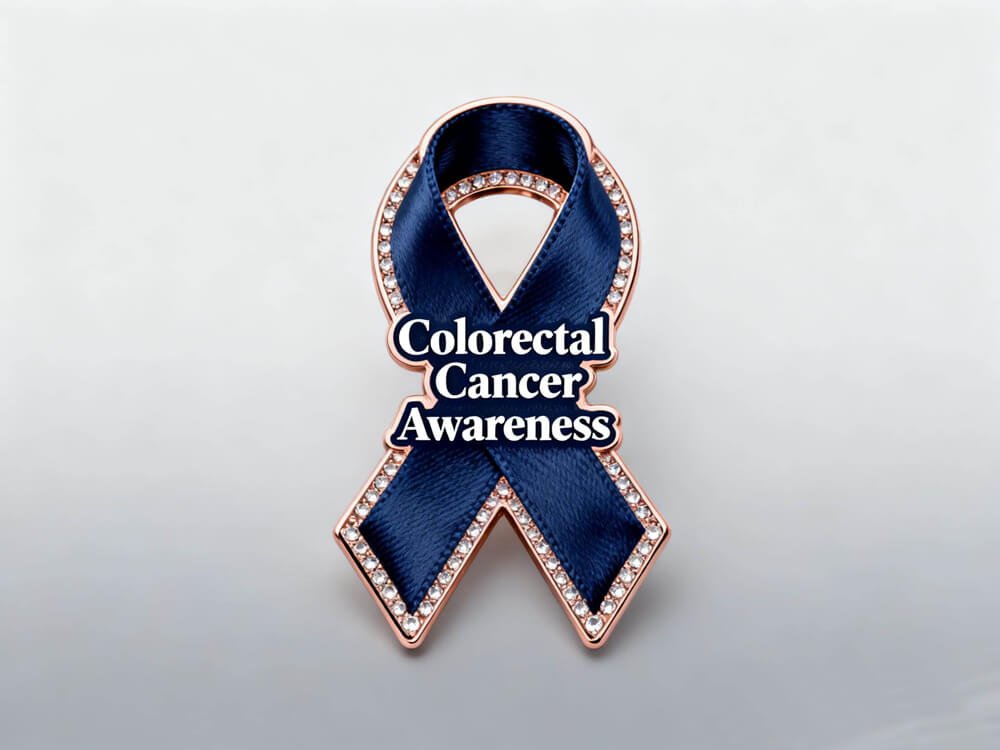
Dark Blue Ribbon (Colorectal Cancer – Colon & Rectal Cancer)
March is Colorectal Cancer Awareness Month, marked by the dark blue ribbon. This ribbon represents the serious nature of cancers affecting the colon or rectum and strongly advocates for regular screenings, such as colonoscopies. These procedures are vital for both prevention and early detection, allowing for the identification and removal of polyps before they can become cancerous. Colorectal cancer is the third most common cancer in both men and women and is increasingly being diagnosed in younger adults, making early screening recommendations, often starting at age 45, more critical than ever.
Light Blue Ribbon (Prostate Cancer)
De light blue ribbon is dedicated to prostate cancer, a condition that affects a significant number of men. Observed in September during Prostate Cancer Awareness Month, this color is often associated with masculinity and serves as a powerful encouragement for men to openly discuss their health and undergo regular screenings like PSA tests. Prostate cancer is the second most common cancer in men globally, with statistics showing that over 1 in 8 men in the U.S. will receive a diagnosis. Crucially, early detection leads to exceptionally high survival rates, often exceeding 99% when caught early.
Blue, Yellow, and Purple Ribbon (Bladder Cancer)
In May, the combined blue, yellow, and purple ribbon shines a light on bladder cancer. This unique combination visually represents the bladder and underscores the pressing need for heightened awareness about this particular cancer. Bladder cancer is notably among the ten most common cancers, particularly affecting older adults, and is more prevalent in men than in women.
Teal Ribbon (Ovarian Cancer)
De teal ribbon represents ovarian cancer, a disease often referred to as the “silent killer” because its subtle symptoms frequently lead to a late-stage diagnosis. Observed during Ovarian Cancer Awareness Month in September, the color teal symbolizes healing and spirituality. This ribbon is crucial for advocating for better early detection methods, increased funding for research, and comprehensive support for women affected by this disease, which is the fifth most common cancer among women.
Teal and White Ribbon (Cervical Cancer)
January is Cervical Cancer Awareness Month, marked by the teal and white ribbon. This dual-toned ribbon represents the cervix and highlights the paramount importance of prevention through regular screenings, such as Pap tests and HPV tests, as well as vaccination against HPV. Thanks to these preventative measures, cervical cancer is highly preventable, and outcomes have significantly improved, making continuous awareness and participation in screenings vital.
Peach Ribbon (Uterine/Endometrial Cancer, Vaginal & Vulvar Cancers)
De peach ribbon is used in September, which is Gynecologic Cancer Awareness Month. It symbolizes health and underscores the importance of awareness for cancers affecting the uterus, including endometrial cancer, as well as vaginal and vulvar cancers. These conditions most commonly affect women after menopause. This ribbon plays a crucial role in promoting early detection and supporting research into effective treatments for these specific gynecologic cancers.
Greens for Growth and Vitality (Liver, Lymphoma, Kidney)
Green hues are adopted for cancers associated with internal organs and the lymphatic system, symbolizing health, growth, and renewal.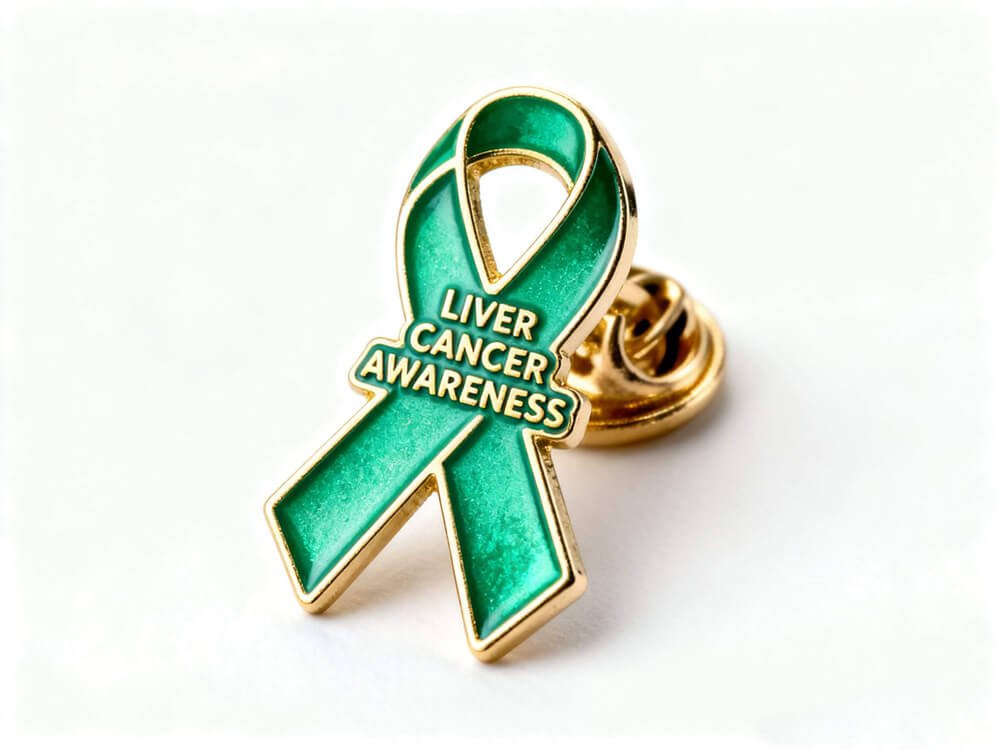
Emerald Green Ribbon (Liver Cancer)
In October, the emerald green ribbon symbolizes Liver Cancer Awareness Month. This rich green color represents the liver, one of the body’s most vital organs. The ribbon underscores the urgency for early detection, as liver cancer is frequently diagnosed at advanced stages, making awareness critical. Statistics show that it affects nearly twice as many men as women. Advocacy efforts focus on promoting research and support for those impacted by this serious disease.
Lime Green Ribbon (Non-Hodgkin Lymphoma)
September, recognized as Lymphoma Awareness Month, prominently features the lime green ribbon for Non-Hodgkin Lymphoma (NHL). This vibrant color signifies renewal and healing for the lymphatic system. The ribbon is crucial for raising awareness about NHL, a group of blood cancers that impact the immune system through the abnormal growth of lymphocytes. It emphasizes the ongoing importance of research and comprehensive support for affected individuals.
Green Ribbon (General Kidney Cancer / Organ Donation – also uses orange)
While the orange ribbon is widely known for kidney cancer, some organizations also use a green ribbon to highlight kidney cancer awareness, particularly in March. This green color can be linked to overall kidney health and the fight against kidney diseases. Additionally, the green ribbon broadly symbolizes organ donation, emphasizing the life-saving impact of such contributions. The dual color usage for kidney cancer underscores the diverse approaches in awareness campaigns.
Oranges for Energy (Leukemia, Kidney Cancer)
The color orange, with its vibrant energy, is chosen to represent cancers that demand significant resilience and ongoing research.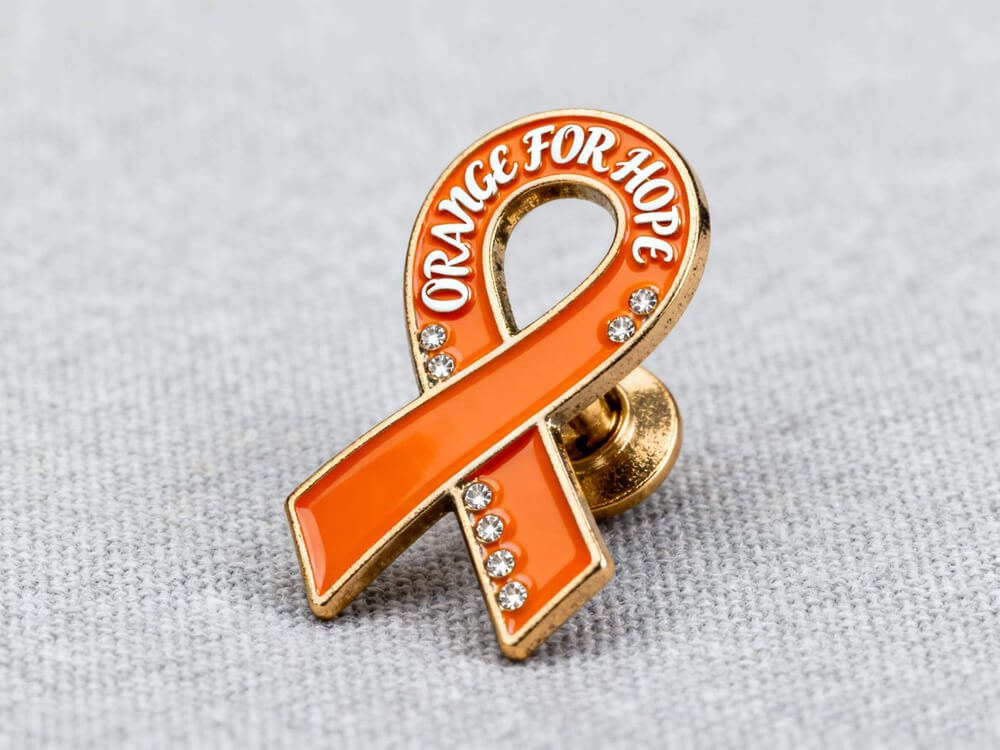
Orange Ribbon (Leukemia)
De orange ribbon vividly represents leukemia, a type of cancer that affects the blood and bone marrow. Its bright hue signifies the energy and strength required to fight this disease. September is Blood Cancer Awareness Month, encompassing leukemia awareness. Leukemia can affect individuals of all ages, notably being the most common cancer in children. Significant advancements in medicine have led to a more than doubling of the relative 5-year survival rate for leukemia since 1975, a testament to ongoing research and funding efforts supported by this ribbon.
Orange Ribbon (Kidney Cancer / Renal Cell Carcinoma)
Also symbolized by the orange ribbon, kidney cancer takes center stage in March during Kidney Cancer Awareness Month. This vibrant color embodies the determination to combat this form of cancer, which originates in the kidneys. Kidney cancer is among the top ten most common cancers in the U.S., often discovered incidentally during imaging tests for other conditions. The orange ribbon highlights the critical need for awareness, early detection, and support for those affected by kidney cancer.
Pinks, Teals, and Blues (Thyroid Cancer)
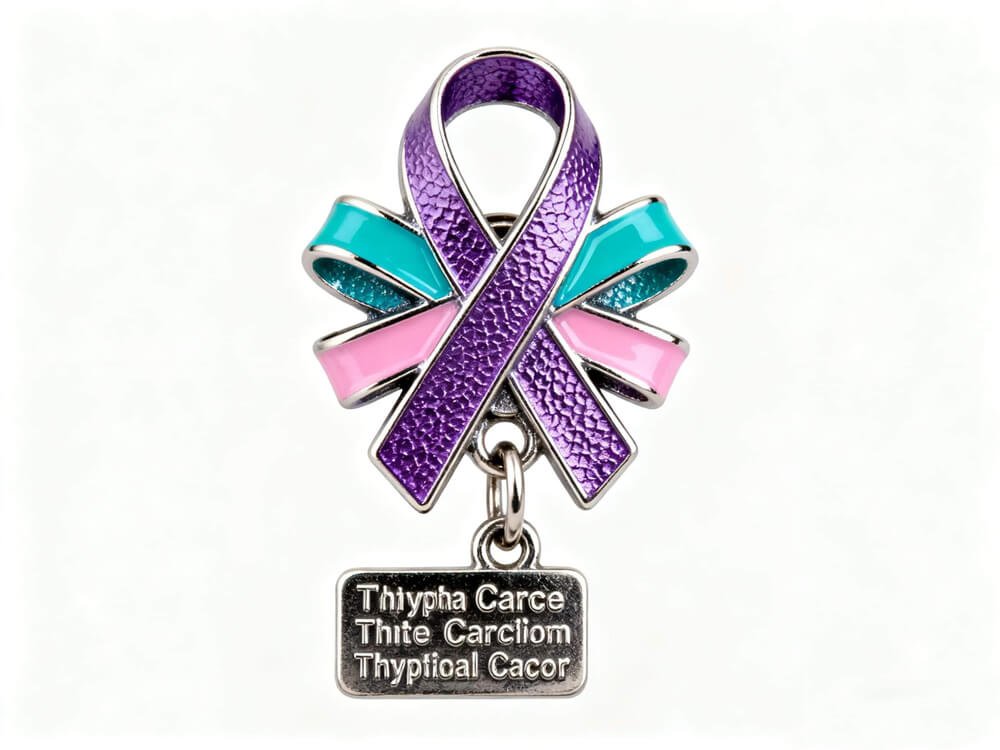
Purple, Teal, and Pink Ribbon (Thyroid Cancer)
The striking combination of purple, teal, and pink represents thyroid cancer awareness in September. These colors collectively symbolize the thyroid gland and the ongoing fight against this particular cancer. Thyroid cancer is notably one of the most treatable forms of cancer, making awareness about its symptoms and the importance of early detection crucial. This multi-colored ribbon supports research and educational initiatives to ensure timely diagnosis and effective management of the disease.
Purples for Perseverance (Pancreatic, Testicular, Myeloma, Hodgkin Lymphoma)
Purple, in its various shades, is a color often associated with dignity, mystery, and perseverance, fitting for several aggressive or challenging cancers.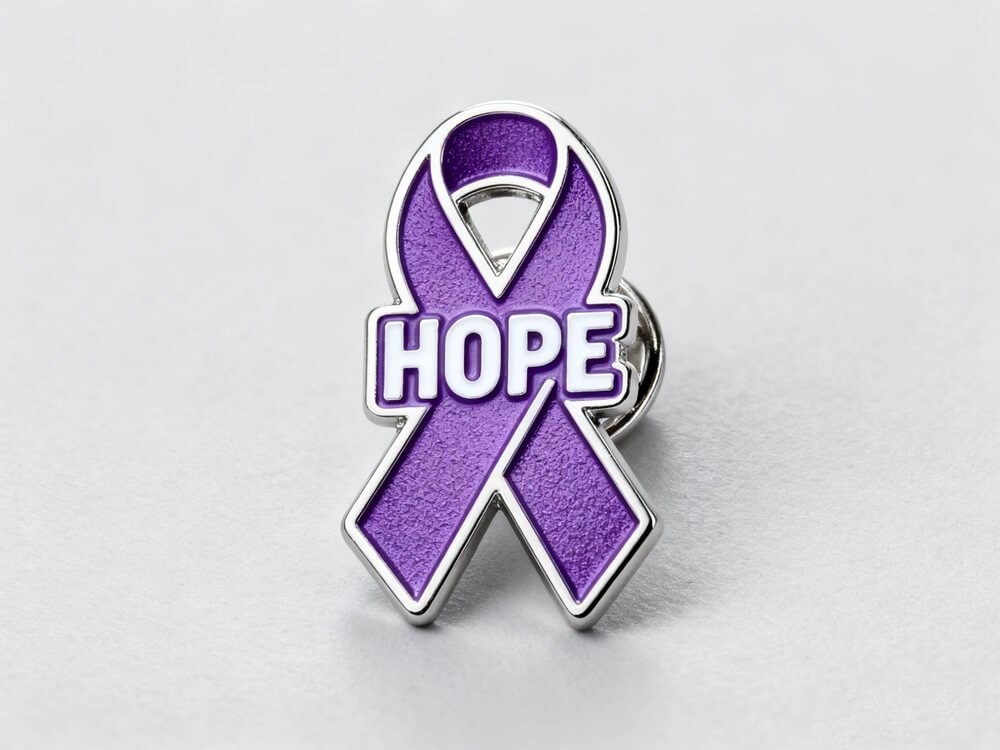
Purple Ribbon (Pancreatic Cancer)
De purple ribbon is a widely recognized symbol for pancreatic cancer awareness, especially in November. This color embodies dignity, perseverance, and hope, qualities deeply significant in the fight against this aggressive disease. Pancreatic cancer is notoriously difficult to diagnose in its early stages due to a lack of clear symptoms and screening tests, making it the third leading cause of cancer-related deaths in the U.S. The purple ribbon’s origin is quite poignant, inspired by Rose Schneider’s favorite color, whose daughter later founded the Pancreatic Cancer Action Network. Advocacy focuses on improving early detection and treatment options.
Light Purple / Orchid Ribbon (Testicular Cancer)
April is Testicular Cancer Awareness Month, marked by the light purple eller orchid ribbon. This color signifies strength and vigilance, actively encouraging men, particularly young men, to perform regular self-exams. Testicular cancer is the most prevalent cancer in males aged 15–44, but crucially, it is highly curable if detected early. The ribbon supports research and raises awareness about preventative measures and the importance of prompt medical attention.
Burgundy Ribbon (Multiple Myeloma)
The deep burgundy ribbon is dedicated to Multiple Myeloma Awareness Month in March. This rich color represents the blood and highlights the serious nature of this cancer, which affects plasma cells found in the bone marrow. The burgundy ribbon supports vital research into new treatments and offers hope for those living with multiple myeloma, a type of blood cancer that primarily affects older adults.
Violet Ribbon (Hodgkin Lymphoma)
De violet ribbon is used in September for Hodgkin Lymphoma awareness, part of Blood Cancer Awareness Month. This specific shade of purple represents a form of lymphoma or blood cancer that typically starts in the lymph nodes. Hodgkin Lymphoma is notably recognized as one of the most curable forms of cancer, emphasizing the success of current treatments and the ongoing importance of research and support for patients.
Whites, Pearls, and Greys (Lung, Brain, Skin)
These lighter, sometimes starker, colors reflect the serious and often challenging nature of the cancers they represent.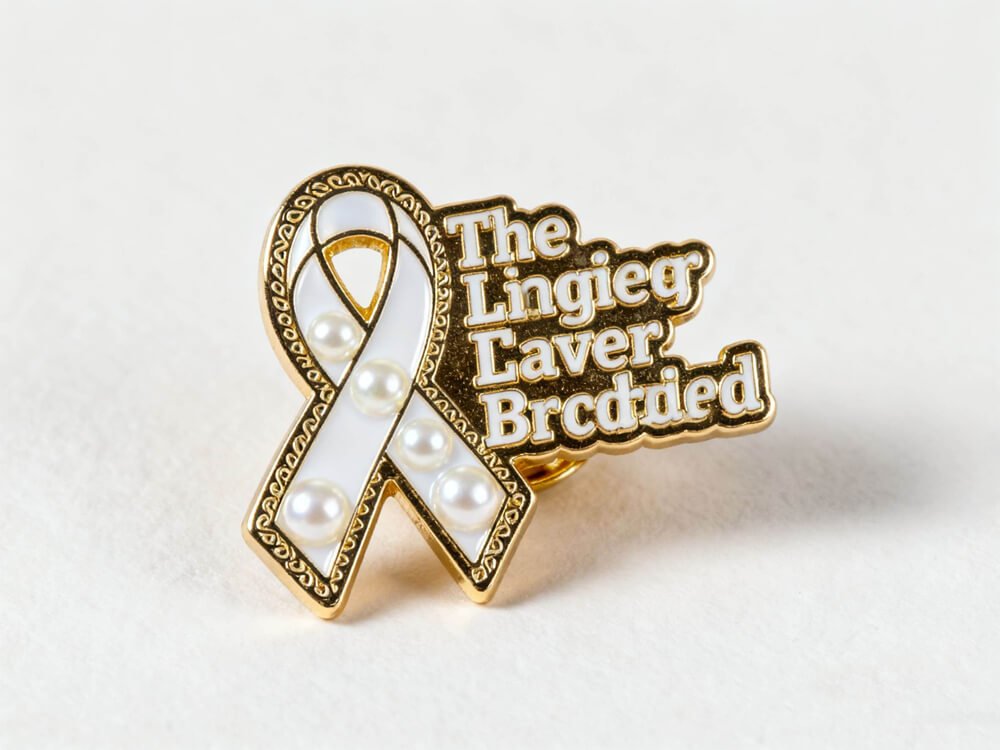
Pearl or White Ribbon (Lung Cancer)
November is Lung Cancer Awareness Month, symbolized by the elegant pearl or white ribbon. This color evokes purity and the preciousness of breath. Lung cancer is a leading cause of cancer-related deaths globally and the second most common cancer in the U.S., accounting for approximately 20% of all cancer-related fatalities. Often diagnosed at advanced stages, this ribbon emphasizes the critical need for early detection methods, significant research into better treatments, and comprehensive support for patients.
Gray Ribbon (Brain Cancer / Brain Tumors)
In May, the gray ribbon promotes Brain Cancer Awareness Month, often reflecting the brain’s “gray matter.” This color represents the serious and complex nature of cancers and tumors affecting the brain and central nervous system, which can impact individuals of all ages. Brain cancer is a leading cause of cancer deaths in children and adults under 40, encompassing both malignant and benign tumors that can profoundly affect health and quality of life. The gray ribbon advocates for increased research and better support systems for patients and their families.
Black Ribbon (Melanoma & Skin Cancer)
De black ribbon, prominent in May during Skin Cancer Awareness Month, draws attention to melanoma and other forms of skin cancer. This ribbon passionately promotes sun safety, regular self-skin checks, and early detection, which are crucial for managing the most prevalent cancer in the United States. Skin cancer affects millions annually and includes melanoma, the most serious type, as well as squamous cell carcinoma (sometimes represented by red and white) and basal cell carcinoma (sometimes orange).
Yellows for Hope (Sarcoma, Bone Cancer)
Yellow is a color of optimism and hope, reflecting the ongoing struggle against cancers that can be particularly aggressive.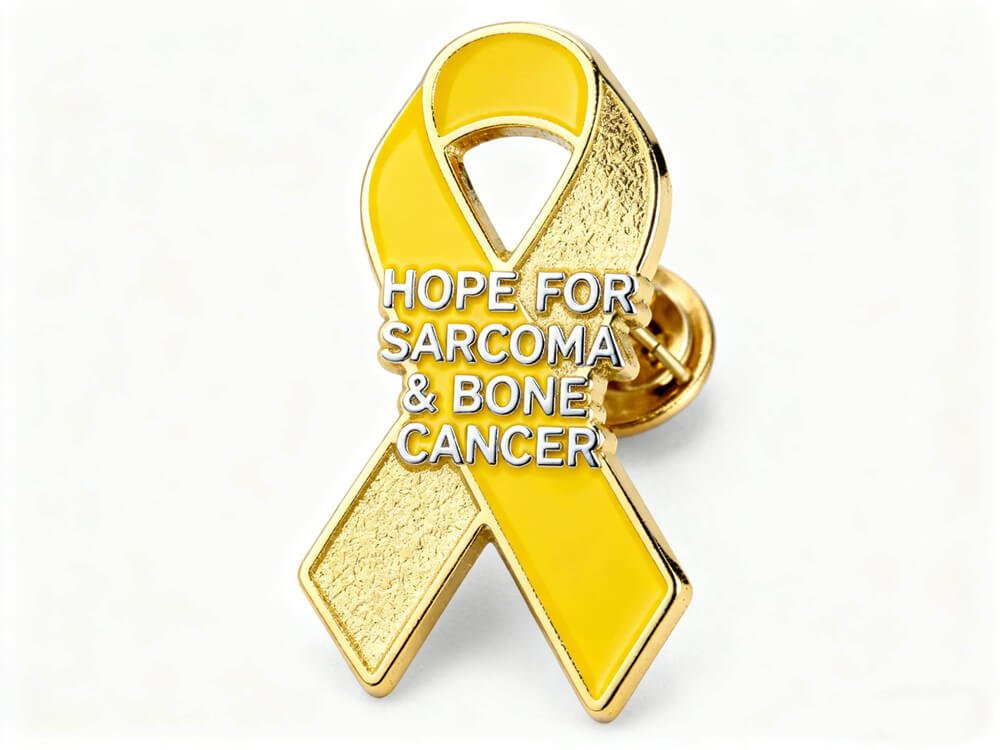
Yellow Ribbon (Sarcoma & Bone Cancer)
July is Sarcoma Awareness Month, and the yellow ribbon is its symbol. This color signifies hope and optimism in the face of sarcomas—a group of rare but often aggressive cancers that develop in bones or connective tissues anywhere in the body. The yellow ribbon supports critical efforts to improve the diagnosis, treatment, and overall support for patients battling these challenging forms of cancer.
Unique Patterns and Less Common Cancers
Beyond the single-color ribbons, unique patterns and less common colors are vital for drawing attention to rare diseases that often receive less funding and awareness.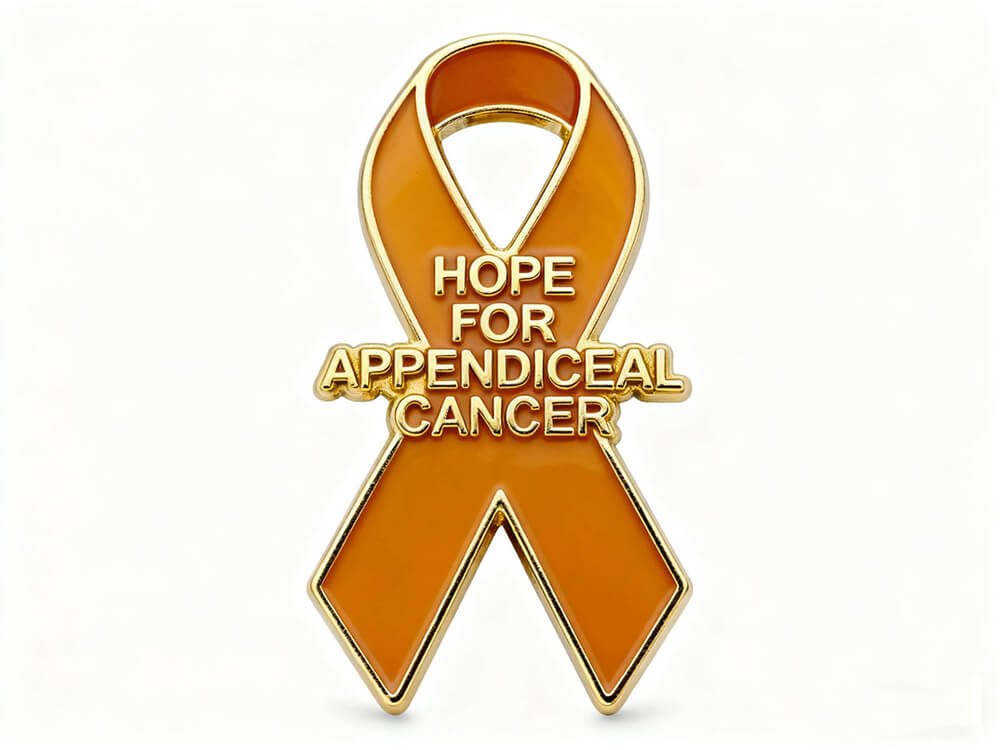
Amber Ribbon (Appendix Cancer)
De amber ribbon represents appendix cancer, a particularly rare type of cancer originating in the appendix. Recognized in August, this amber color symbolizes energy and the dedicated effort required to fight this lesser-known disease. Awareness is crucial for promoting research and facilitating earlier detection, as appendix cancer is often diagnosed incidentally during surgeries performed for other conditions, highlighting the need for increased attention and understanding.
Zebra Print Ribbon (Carcinoid & Neuroendocrine Tumors)
In November, the distinctive zebra print ribbon symbolizes carcinoid cancer and other neuroendocrine tumors (NETs). This unique pattern is inspired by the medical adage, “If you hear hoof beats, think horses, not zebras,” which reminds doctors to consider rare conditions when symptoms are atypical. The zebra stripes represent the uniqueness, complexity, and often challenging diagnosis of these tumors, which can appear in various parts of the body. The ribbon advocates for better understanding, earlier diagnosis, and effective treatments for these often slow-growing but potentially life-threatening cancers.
Burgundy and White Ribbon (Head & Neck Cancer / Oral Cancer)
April is Head & Neck Cancer Awareness Month, marked by the burgundy and white ribbon. This two-toned symbol represents the complex and varied nature of cancers that can affect various areas of the head and neck, including the mouth, throat, larynx, nasal cavity, and sinuses. These cancers are often linked to significant risk factors such as alcohol and tobacco use. The ribbon supports research and emphasizes the critical importance of early detection and comprehensive treatment strategies for these diverse cancers.
Periwinkle Ribbon (Stomach/Gastric Cancer, Esophageal Cancer, Small Intestine Cancer)
The delicate periwinkle ribbon serves multiple purposes, representing stomach (gastric) cancer in November, and esophageal and small intestine cancers. This soft, lavender-blue shade highlights these digestive system cancers, which are often challenging to diagnose in their initial stages. The ribbon is crucial for promoting greater public awareness, especially for stomach cancer, which is a leading cause of cancer deaths globally. Advocacy efforts focus on early detection, research funding, and improved outcomes for patients with these often aggressive diseases.
Beyond Specific Diseases: Ribbons for the Broader Cancer Community
While many ribbons proudly represent individual cancers, some symbols unite the entire cancer community, acknowledging the shared journey and universal need for support.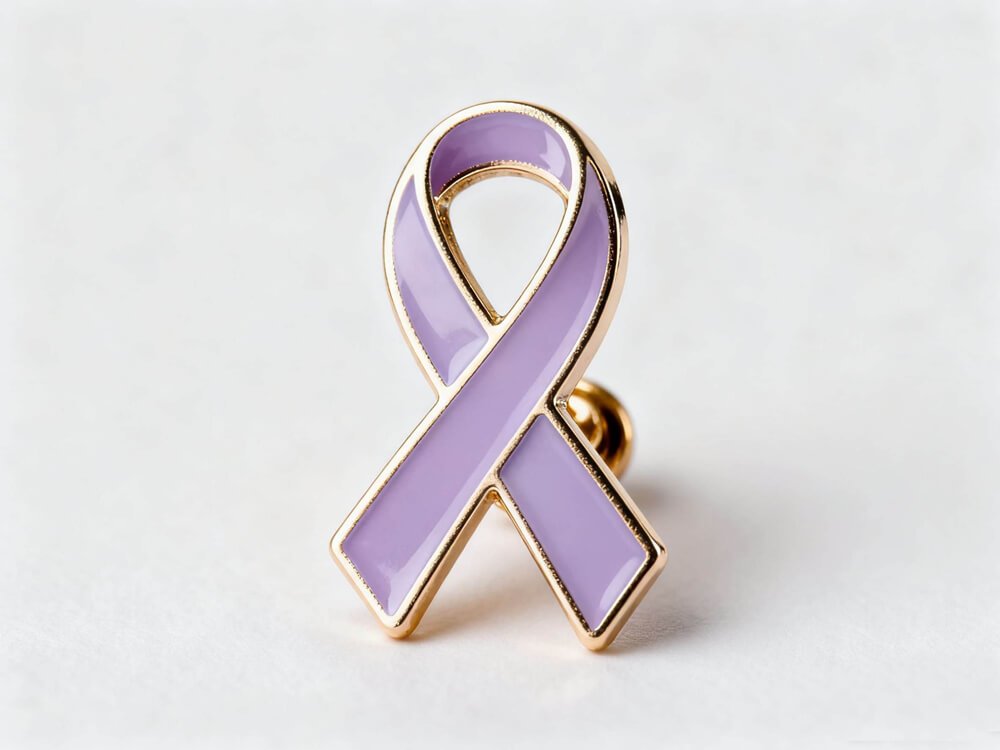
Lavender Ribbon (All Cancers / General Cancer Awareness)
De lavender ribbon stands as a powerful, unifying symbol for all cancers. In February, recognized as National Cancer Prevention Month, this ribbon promotes general cancer awareness. It transcends specific diagnoses, fostering a sense of solidarity and comprehensive support for everyone touched by any type of cancer. The lavender ribbon acknowledges the shared experiences of patients, survivors, and caregivers across the diverse landscape of cancer types, aiming to unite efforts in the collective fight against the disease.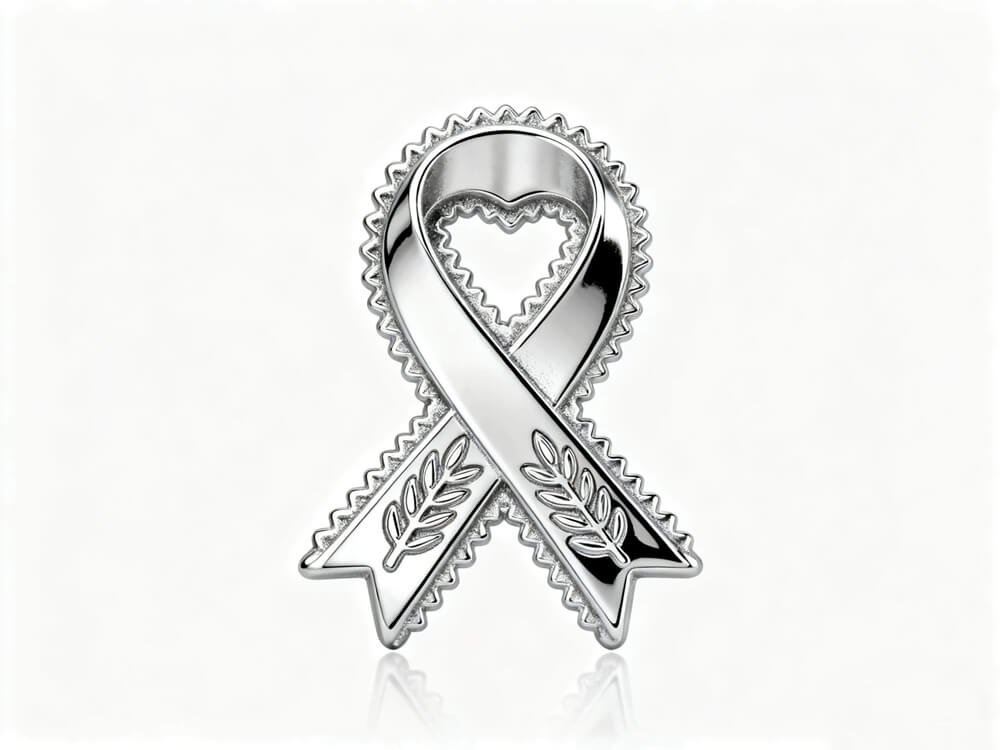
Ribbons for Caregivers and Survivors
The journey through cancer is not only for the patient but also for their devoted caregivers and the inspiring survivors who have faced the disease. While not always assigned a distinct, universal color, specific designs or generalized colors like purple are sometimes used to honor these crucial roles. These ribbons acknowledge the vital support systems, the arduous path of recovery, and the ongoing challenges faced by both patients and their loved ones. They highlight the resilience of the human spirit and the profound impact of community in the healing process.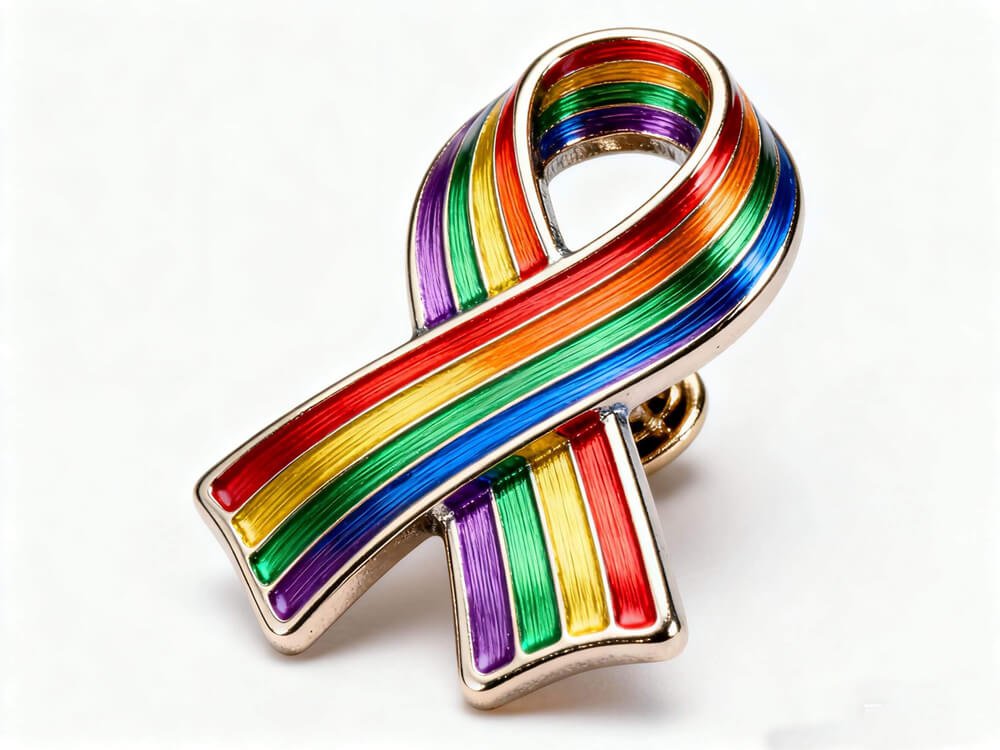
Multi-Colored Ribbons / Rainbow Ribbons
To embrace the full spectrum of the cancer experience and show comprehensive support, individuals and organizations sometimes use multi-colored ribbons eller rainbow ribbons. These vibrant displays represent multiple cancers simultaneously, promoting broad support for the entire cancer community. They symbolize the diversity within the cancer journey and foster unity across different cancer types, recognizing that despite distinct diagnoses, there is a shared pursuit of hope, healing, and breakthroughs.The Great Debate: Unity vs. Division in the Ribbon Kaleidoscope
The vibrant array of cancer awareness ribbons, while powerful, has also sparked important conversations about their effectiveness and potential drawbacks. This “ribbon kaleidoscope” presents both strengths and challenges in the broader landscape of cancer advocacy.The “Sea of Pink” Phenomenon and its Criticisms
The undeniable success and global visibility of the pink ribbon for breast cancer awareness have been a double-edged sword. While it has mobilized unprecedented support and funding, it has also led to concerns about “over-awareness” in some circles. Advocates for less common or less publicized cancers sometimes argue that the overwhelming focus on breast cancer may inadvertently divert public attention, funding, and resources away from equally devastating but less recognized cancer types.One poignant anecdote comes from Beth Caldwell, a metastatic breast cancer patient. She articulated a powerful sentiment: “I’m going to die of my breast cancer and I feel like I have a lot in common with people who have lung cancer, who have stage 4 pancreatic cancer. Our experience of life is much more similar than it is different.” Her words highlight a call for unity, suggesting that the shared experience of advanced disease often transcends the specific organ where the cancer originated.Color Confusion and Overlap
The sheer number of ribbon colors can, at times, lead to confusion. Instances where different, unrelated cancers share the same color can muddy awareness efforts. For example, the orange ribbon represents both leukemia and kidney cancer, while various shades of purple signify pancreatic cancer, testicular cancer, Hodgkin lymphoma, and more.Similar shades further complicate identification; the light blue for prostate cancer can be easily mistaken for the teal of ovarian cancer, especially when buildings are lit up during awareness months that often overlap. This ambiguity can dilute specific awareness messages and potentially impact targeted fundraising efforts, making it harder for the public to recall which color belongs to which cause. As Thomas N. Kirk, president and CEO of Us TOO for prostate cancer, noted, “marketing professionals tell me the blue is confusing to people because they don’t know what it means.”The Evolving Call for Unity
Amidst these discussions, a growing sentiment for greater unity within the cancer community has emerged. Patients increasingly voice that the profound experience of living with cancer, particularly in advanced stages, creates a shared bond that transcends the specific organ affected. This perspective aligns with scientific advancements that increasingly show tumor biology—its genomic and molecular characteristics—can sometimes be more critical than the organ of origin. This evolving understanding points towards a future where patient communities might work more closely together.Even major organizations have responded to this sentiment. The National Football League (NFL), after promoting breast cancer awareness exclusively from 2009-2016, announced in 2017 that teams would be able to choose their own cancer types to support. This significant shift served as a catalyst for change, allowing other cancer colors to come to the forefront and fostering a more inclusive approach to cancer awareness.The Counter-Argument: The Enduring Importance of Specificity
Despite the calls for greater unity, many advocates firmly believe in the enduring importance of specific ribbon colors. Tailored advocacy and research are crucial because many cancers have distinct risk factors, unique symptoms, and highly specialized treatment protocols that require focused attention. Specific colors help to highlight these individual needs, enabling targeted fundraising for precise research efforts. Moreover, a specific color often holds deep personal connection and identity for individuals, families, and communities directly impacted by that particular cancer. It provides a tangible, meaningful way to honor, remember, and support their unique journey, fostering a sense of belonging and focused purpose.The Science of Symbolism: Why Colors Matter
The choice of color for an awareness ribbon is rarely arbitrary; it’s a deliberate decision rooted in the powerful psychology of color and its ability to communicate complex messages instantly. These hues are more than just decoration; they are carefully selected symbols designed to resonate deeply with the public.Psychological Impact of Colors: Evoking Emotions and Action
Colors possess an inherent psychological power, capable of evoking specific emotions, associations, and even physiological responses. For instance, the vibrancy of pink often brings forth feelings of nurturing, hope, and compassion, making it a fitting choice for breast cancer awareness. Red can signify passion, urgency, and the lifeblood, aligning with causes like blood cancers. Gold, a precious metal, naturally symbolizes something of immense value, hence its use for childhood cancers to highlight the preciousness of young lives. Even gray, often associated with the brain’s “gray matter,” conveys the serious and complex nature of brain cancers. This cognitive recognition allows colors to serve as powerful, quick, and memorable identifiers in a complex landscape of diseases, enabling instant association even without accompanying text.Strategic Selection and Color Theory in Awareness Campaigns
Advocacy organizations often engage in meticulous research when selecting a ribbon color. This process involves considering market research, public perception, cultural associations, and the existing symbolic landscape to ensure the chosen color effectively communicates their message and differentiates their cause. A notable example is the Kidney Cancer Association, which in 2005 conducted “color theory research.” This analysis led them to transition from Kelly green to orange, as their testing with consumers validated orange as a more effective and distinct color for their cause, helping them stand apart from other smaller charities in the same area that had historically stuck with green. Ultimately, ribbons function as strong visual branding tools, helping organizations establish a distinct identity and connect with their specific cause on an emotional level.Cultural and Universal Significance
While specific color meanings can sometimes vary across cultures, the overarching act of wearing a ribbon as a symbol of support and awareness holds a near-universal symbolic power. This simple gesture transcends linguistic barriers, making the ribbon a globally understood emblem of shared purpose and solidarity in the face of health challenges. This universal resonance amplifies the impact of awareness campaigns, allowing a single image to convey a complex message of support and action across diverse populations.The Tangible Impact: How Ribbons Drive Change in the Cancer Fight
Awareness ribbons are far from merely symbolic; they are active agents of change, catalyzing public engagement, fostering community, and driving critical advancements in cancer research and patient care. Their impact stretches from the individual to the systemic, creating a powerful ripple effect in the global fight against cancer.Raising Awareness and Public Education
One of the most immediate impacts of ribbons is their ability to spark conversations. A visible ribbon often prompts questions, encouraging dialogue about specific cancer types, their symptoms, and the crucial importance of proactive health measures. This increased awareness directly correlates with greater participation in life-saving screenings, such as mammograms, colonoscopies, and PSA tests. When people are informed, they are more likely to recognize early warning signs, which can significantly improve survival rates. Furthermore, openly discussing various cancer types helps to normalize conversations and reduce any lingering stigmas associated with certain diagnoses, fostering a more informed and compassionate public.Mobilizing Support and Fostering Community
Wearing or displaying a ribbon creates a tangible and visible network of support, sending a clear message to patients that they are not alone in their journey. For those battling cancer, seeing these ribbons can offer a profound sense of emotional comfort, encouragement, and solidarity during what is often the most challenging period of their lives. Ribbons empower individuals, families, and friends to actively participate in a cause close to their hearts, transforming passive concern into active engagement. They solidify a sense of community, connecting individuals who might otherwise feel isolated, and demonstrating a collective commitment to fighting the disease.Driving Funding and Groundbreaking Research
Awareness ribbons are instrumental in generating vital financial resources for cancer research and patient support services. They are prominently featured on merchandise, at fundraising events—such as “Dress in Blue Day” for colorectal cancer, which has been adopted by the Colorectal Cancer Alliance—and through direct sales. These efforts channel crucial funds directly into research projects, supporting the development of new treatments, clinical trials, and innovative preventative measures.Beyond direct fundraising, increased public visibility and awareness translate into greater public and political will. This influence can lead to substantial governmental investments in cancer research and improved healthcare policies. Ultimately, awareness-driven funding and advocacy have been pivotal in major scientific and medical advancements, resulting in groundbreaking immunotherapy, targeted therapies, precision medicine, and more sophisticated diagnostic tools. These breakthroughs directly improve patient outcomes and significantly enhance their quality of life.Making a Difference: How You Can Get Involved
Every individual has the power to contribute to the fight against cancer. Whether through simple gestures or active participation, your involvement can make a significant difference in raising awareness, supporting patients, and advancing research.Ways You Can Contribute
- Wear and Share Ribbons: This simple yet powerful act is a visible demonstration of solidarity. A ribbon can spark conversations and educate others about the cause it represents.
- Participate in Awareness Events: Engage in local or national walks, runs, charity galas, and virtual events. These gatherings are crucial for fundraising and creating a strong sense of community. Events like “Dress in Blue Day” for colorectal cancer, founded by survivor Anita Mitchell, exemplify how specific awareness events can grow into national movements.
- Support Cancer Organizations: Consider donating financially to reputable cancer research institutes and patient support organizations. If monetary contributions aren’t possible, volunteering your time, skills, and energy to local or national advocacy groups is equally valuable.
- Educate Yourself and Others: Stay informed about various cancer types, their symptoms, risk factors, and prevention methods. Sharing accurate and reliable information with your social circles encourages proactive health management and promotes regular screenings.
- Advocacy and Policy Influence: Your voice matters! Contact your elected representatives to support legislative initiatives that fund cancer research and improve patient access to care. Participating in online campaigns and petitions can also amplify calls for greater governmental support.
- Social Media Engagement: Utilize your social media platforms to spread awareness. Share personal stories (if you feel comfortable), amplify messages from reputable cancer organizations, and use relevant hashtags to increase visibility and reach.
- Prioritize Self-Care and Early Screening: As a direct outcome of awareness, taking personal responsibility for your health is paramount. This includes attending regular medical check-ups and adhering to age-appropriate cancer screenings, which are critical for early detection and improved outcomes.
Conclusion: A United Front in the Fight Against Cancer
The journey through the colorful world of cancer awareness ribbons reveals a profound truth: these simple loops of fabric are far more than mere decorations. We’ve explored their humble beginnings, tracing their evolution from popular song references to global symbols of hope. We’ve delved into the vibrant spectrum of individual colors, each telling a unique story of a specific cancer, its challenges, and the dedicated communities fighting it. We’ve also navigated the nuanced debates surrounding their proliferation, acknowledging both their unifying power and the potential for confusion. Yet, through it all, the message remains clear: ribbons are potent instruments of change.They actively spark conversations, mobilize support, foster crucial community bonds, and, perhaps most importantly, drive the funding and advocacy essential for groundbreaking research. Each ribbon, whether a globally recognized pink or a rare zebra print, carries an immense message of resilience and collective defiance against cancer. The fight against cancer is an ongoing journey, and awareness is its constant companion. As we look to the future, the evolving landscape of cancer awareness points towards even greater unity, continued scientific breakthroughs, and the enduring role of these vibrant symbols in inspiring a world where cancer no longer holds such devastating power.Let’s remain engaged, informed, and actively supportive. Wear your chosen ribbon with pride, participate in awareness campaigns, lend support to patients and their families, and advocate for increased research funding. Together, united by these powerful symbols, we can make a tangible difference in the pursuit of a future free from cancer.Frequently Asked Questions (FAQs) About Cancer Awareness Ribbons
What is the most recognized cancer awareness ribbon?
De pink ribbon is universally recognized as the symbol for breast cancer awareness and support. Its widespread adoption in the early 1990s cemented its status as an iconic global symbol, making it the most familiar of all cancer awareness ribbons.How many different cancer ribbon colors are there?
While the exact number can vary depending on the source and specific organizations, there are typically acknowledged to be over 50 different awareness ribbon colors and patterns. These represent individual cancers, groups of cancers, survivors, caregivers, and various related health issues.What is the purpose of cancer awareness ribbons?
Cancer awareness ribbons serve multiple critical purposes: they raise public awareness and educate about specific cancer types, honor patients and survivors, commemorate those who have passed, inspire action for early detection and prevention, and help to generate vital funds for research and support services.Can one cancer have multiple ribbon colors?
Yes, it is common for some cancers to be represented by more than one ribbon color, or by variations and combinations of colors. This often depends on the specific advocacy group, regional differences, or the nuance they wish to convey. For example, kidney cancer uses both orange and green by different organizations.What color ribbon represents all cancers?
De lavender ribbon is commonly recognized as the symbol for all cancers collectively. It symbolizes general cancer awareness and support for everyone who has been touched by any type of cancer, fostering unity across the diverse cancer community.Which cancers use a blue ribbon?
Various shades of blue represent different cancers: the dark blue ribbon is for colorectal cancer, the light blue ribbon is for prostate cancer, and a combination of blue, yellow, and purple is used for bladder cancer. Additionally, teal signifies ovarian cancer, and a teal and white ribbon represents cervical cancer.Why is the zebra print ribbon used for carcinoid cancer?
De zebra print ribbon is used for carcinoid cancer and other neuroendocrine tumors to symbolize their rarity and complexity. Its origin comes from the medical adage, “If you hear hoof beats, think horses, not zebras,” reminding medical professionals to consider less common diseases when presented with unusual symptoms.What month is dedicated to prostate cancer awareness?
September is designated as Prostate Cancer Awareness Month. During this time, advocacy groups and health organizations focus their efforts on educating the public about prostate cancer, promoting crucial screenings, and supporting ongoing research initiatives aimed at improving men’s health.How do organizations choose a specific color for a cancer ribbon?
Organizations typically choose ribbon colors based on a thoughtful combination of factors. These include existing color psychology associations, unique significance to their community (such as Rose Schneider’s favorite color purple for pancreatic cancer), market research for memorability, and the desire to create a distinct identity that differentiates their cause while still resonating with the public.What are the common criticisms of the cancer ribbon movement?
Common criticisms include concerns about the “sea of pink” potentially overshadowing other equally serious cancers, confusion arising from overlapping or very similar ribbon colors, and accusations of “pinkwashing” or excessive commercialization that might divert focus from genuine research and patient support.Feeling Like an Expert? It’s Time to Create.
You now have the knowledge to navigate the pin manufacturing process with confidence. The next step is the most exciting one: bringing your idea to life. Our team is standing by to help you with design, quoting, and expert advice.

